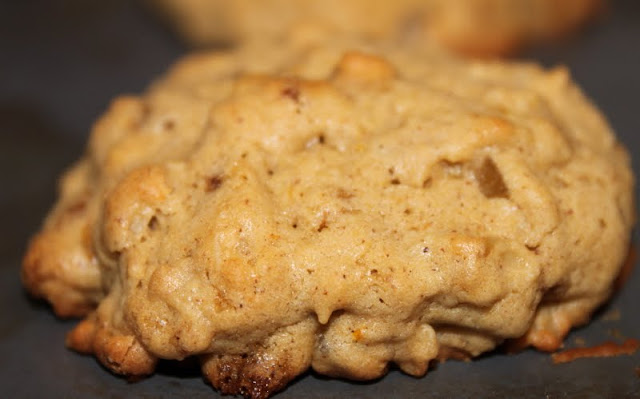Monday, March 22, 2010
The (not so) Rote Oat
I have a lifelong bond with oatmeal. It’s a special one that I inherited as a child, without choice. You see, my father used to work for Quaker. Not only did he work for the company, now long swallowed up by PepsiCo, but he worked diligently for the cereal division.
My father’s job made us three little girls (me and my sisters that is), the princesses of Cap’n Crunch, Life cereal, and most importantly Quaker Oats. The relationship with Quaker was deep: we appeared on the back of the Cap’n Crunch box in Hawaiian muumuus, my dad’s co-workers crafted a carton of oatmeal long buried in the basement with his picture overlaying Mr. Quaker, and we tested products such as Toasted Oatmeal in white unlabeled boxes long before they were released to the public.
My dad still diligently eats oatmeal everyday, although my feelings for oatmeal are a little more tenuous. I don’t think there is any scientific evidence that it “sticks to your bones”. If it did, I think that orthopedists would have their patients avoid it. It would make surgery very gooey.
Oatmeal has staged various health claims, including the ability to reduce both blood pressure and cholesterol. In a 2001 study in the Journal of Nutrition, those that were put in a trial group of oatmeal consumption on a low calorie diet versus those that were simply on a low calorie diet had a significant reduction in both blood pressure and total cholesterol [1]. Although similar health benefits have been shown in other studies, in the 2007 Cochrane Review “Wholegrain cereals for coronary heart disease” suggests to interpret these findings cautiously. The studies on oatmeal were underpowered, conducted over the short term, and only showed their effect on individual risk factors of coronary artery disease. None researched oatmeal’s effects on overall morbidity and mortality of heart disease [2].
Regardless of whether or not oatmeal prevents heart disease, it still contains healthy amounts of soluble fiber and most importantly, can be quite tasty. I think the best way to celebrate oatmeal is with cookies. My friend Beth asked me to make cookies as my next recipe since my name is “OB Cookie” and I’ve only featured one cookie recipe. These cookies are a spin on the classic oatmeal raisin. Instead of plump raisins, I added chopped up candied ginger, and to accompany the spice and kick of the ginger, I added orange zest to the batter. In attempts to make the cookies a bit healthier (although no less fatty) while still keeping them rich, I substitute almond butter for a lot of the butter normally added to oatmeal raisin cookies, and I use whole wheat white flour.
Whole Grain Oatmeal Almond Orange Ginger Cookies
½ cup (1 stick) butter softened
1/3 cup unsweetened creamy almond butter
Zest of one orange
¾ cup packed brown sugar
1 tsp vanilla extract
1 egg
1 cup whole wheat white flour
¼ tsp salt
¼ tsp baking soda
1 ¼ cup oatmeal
1/3 cup candied ginger finely chopped
Preheat oven to 350. With mixer cream butter, almond butter, orange zest, sugar until creamy. Add vanilla and egg, beat until mixed. In medium bowl, combine salt, flour and baking soda and add slowly to butter mixture, beating until combined. Add oats and ginger, mix until combined. Drop ~1/4 cup mixture onto baking sheet. Bake about 8 minutes or until golden brown on top.
1. Keenan, JM., et al. “Oat ingestion reduces systolic and diastolic blood pressure in patients with mild or borderline hypertension: a pilot trial.” The Journal of Family Practice, v. 51 issue 4, 2002, p. 369.
2. Kelly, SA., et al. “Wholegrain cereals for coronary heart disease.” Cochrane Database Syst Rev, issue 2, 2007, p. CD005051.
Labels:
cholesterol,
cookies,
hypertension,
oatmeal,
whole grain
Subscribe to:
Post Comments (Atom)


No comments:
Post a Comment